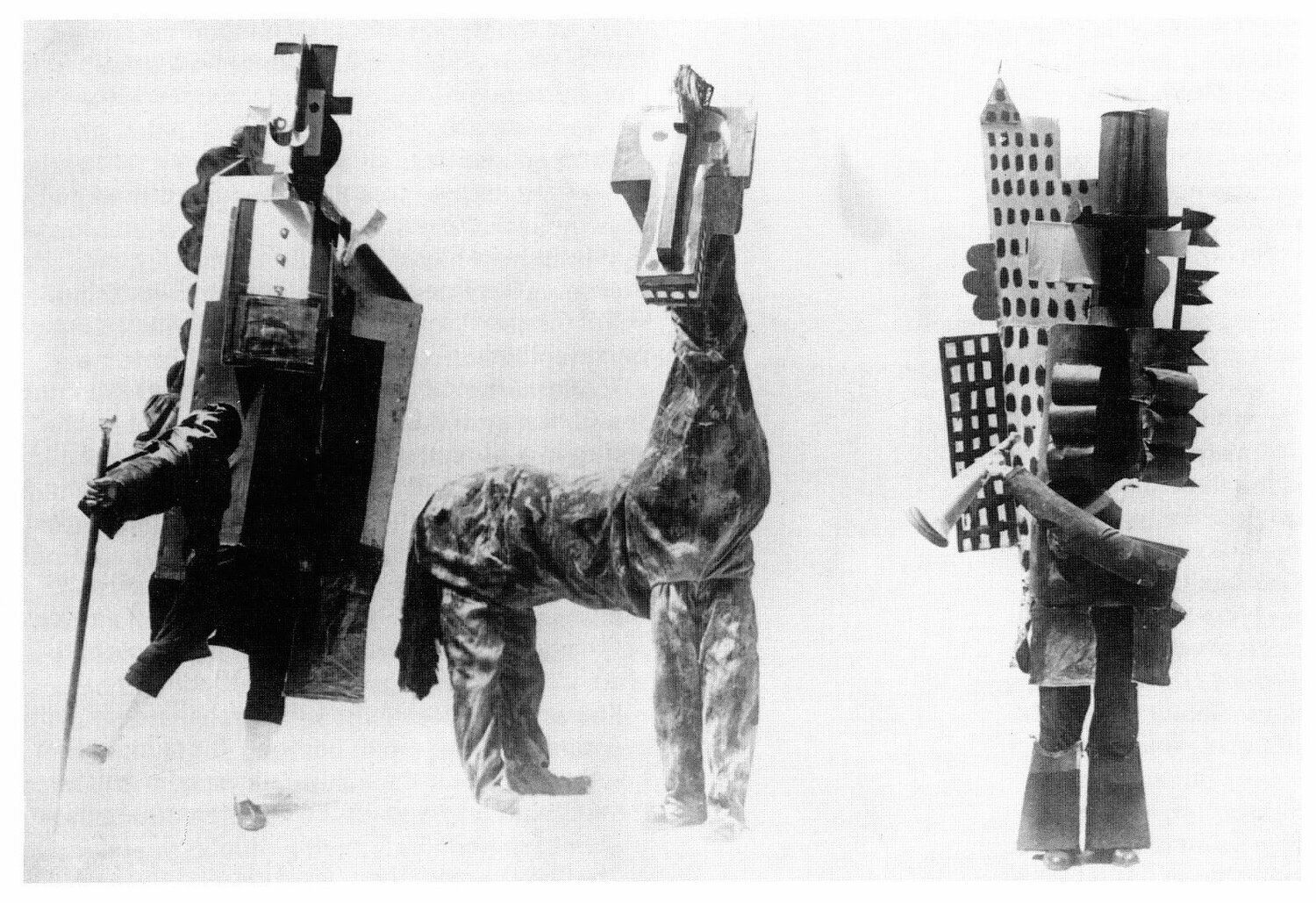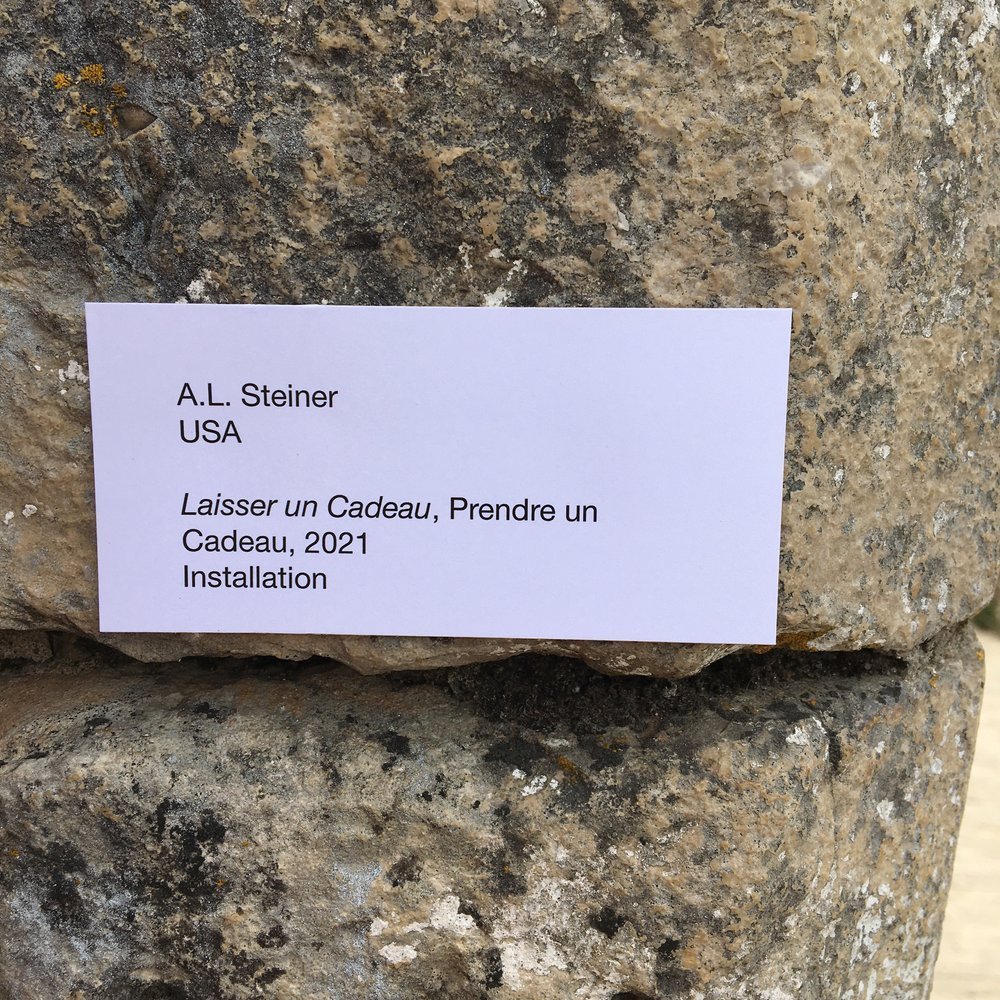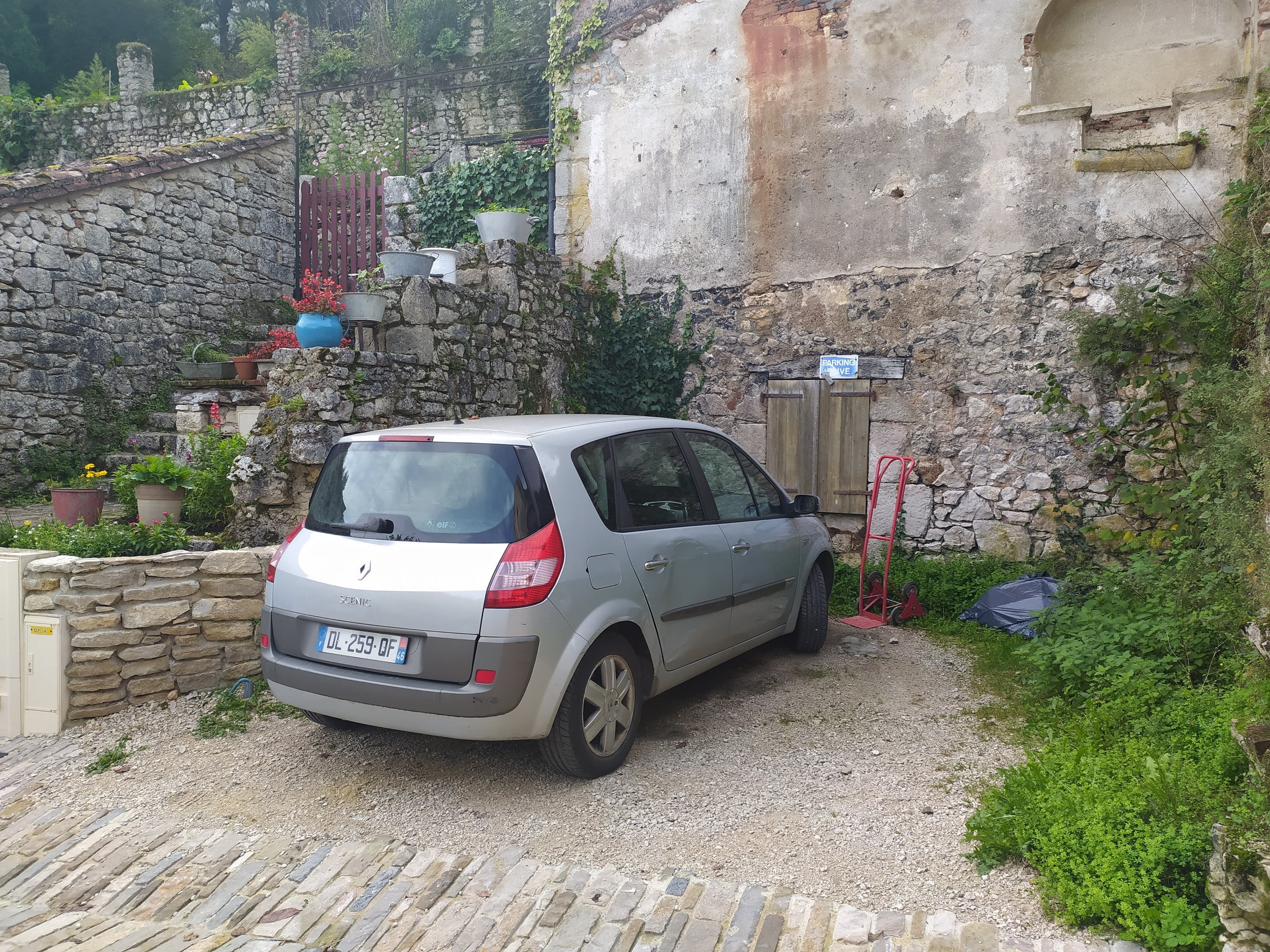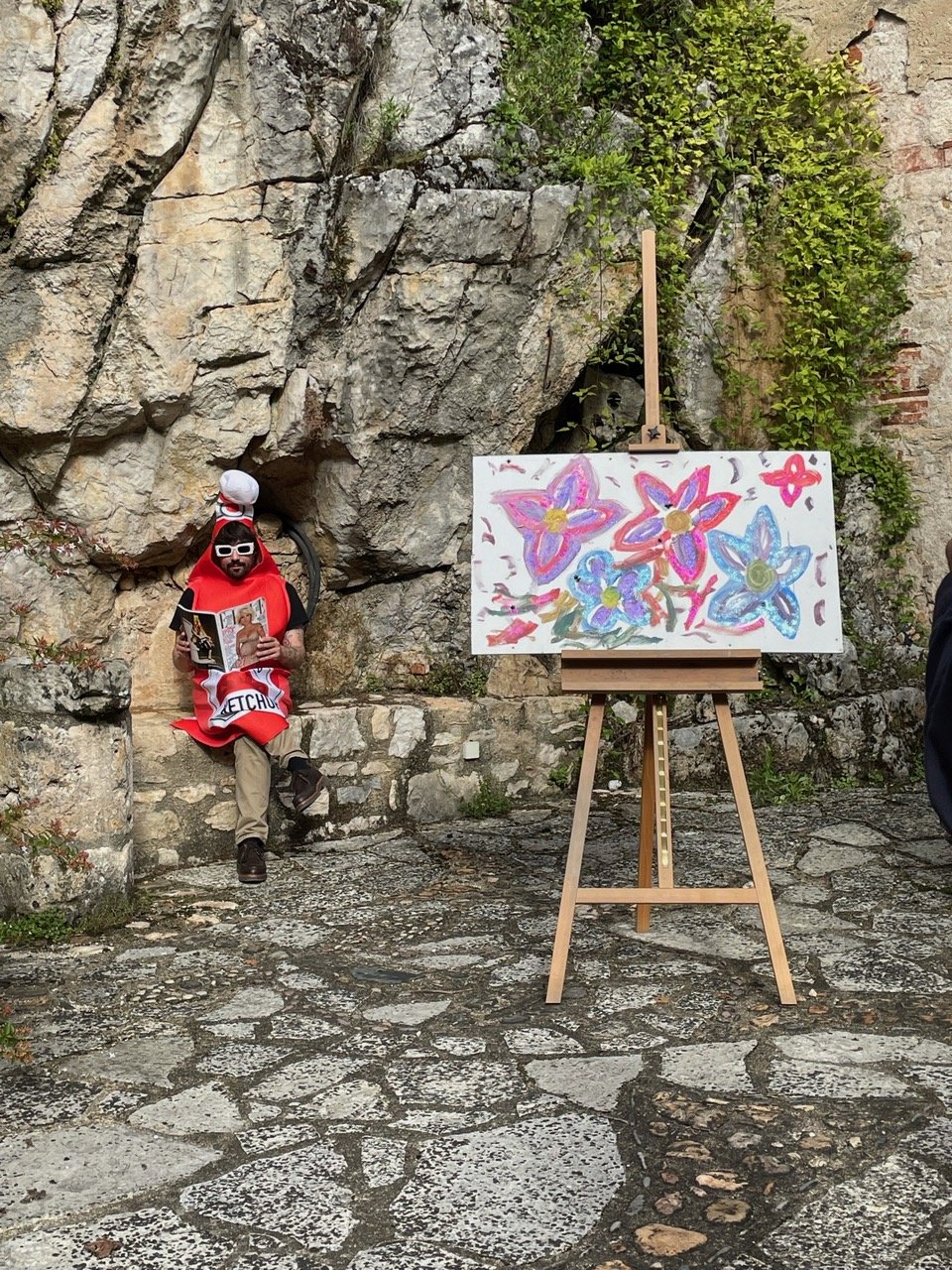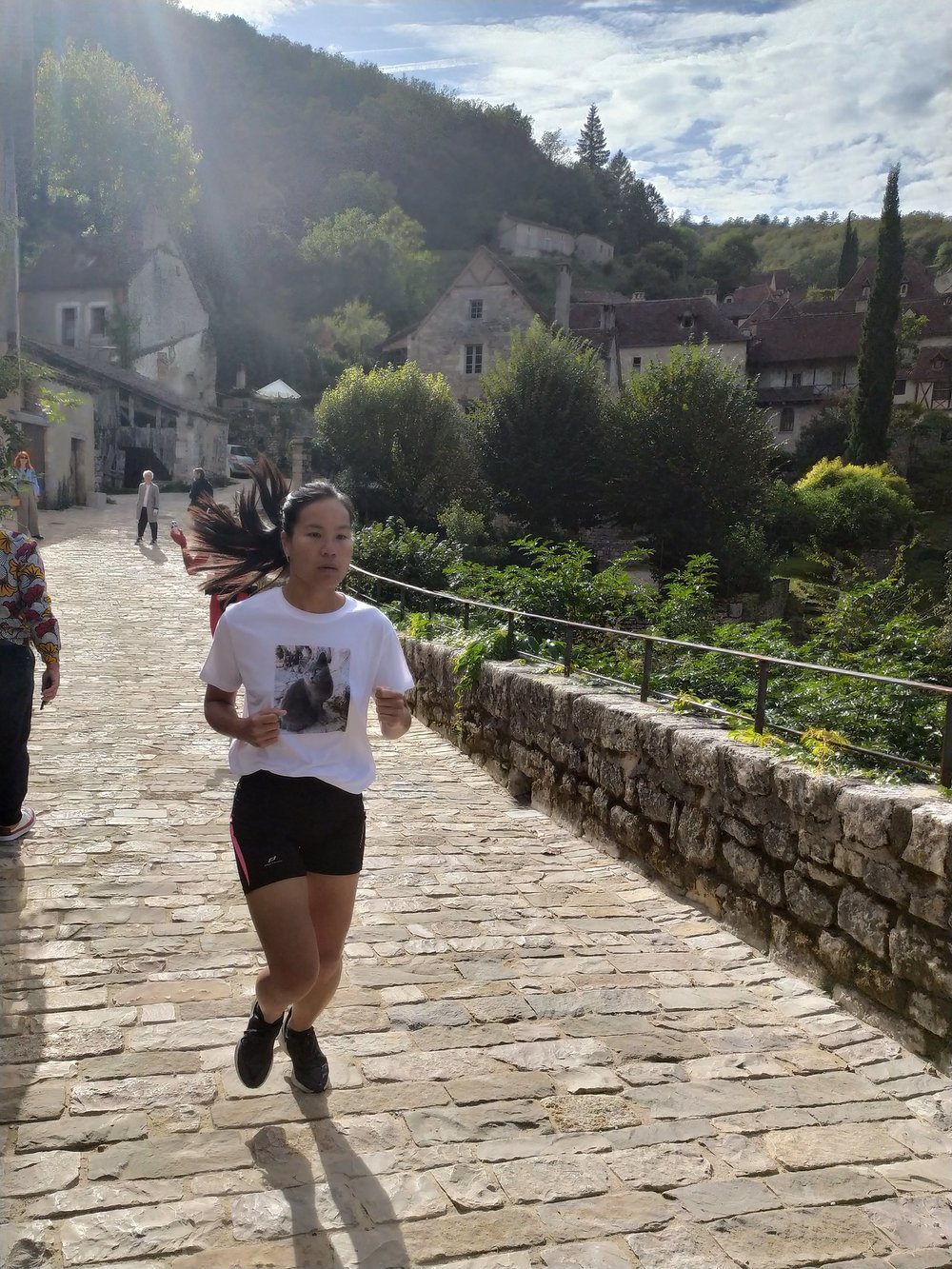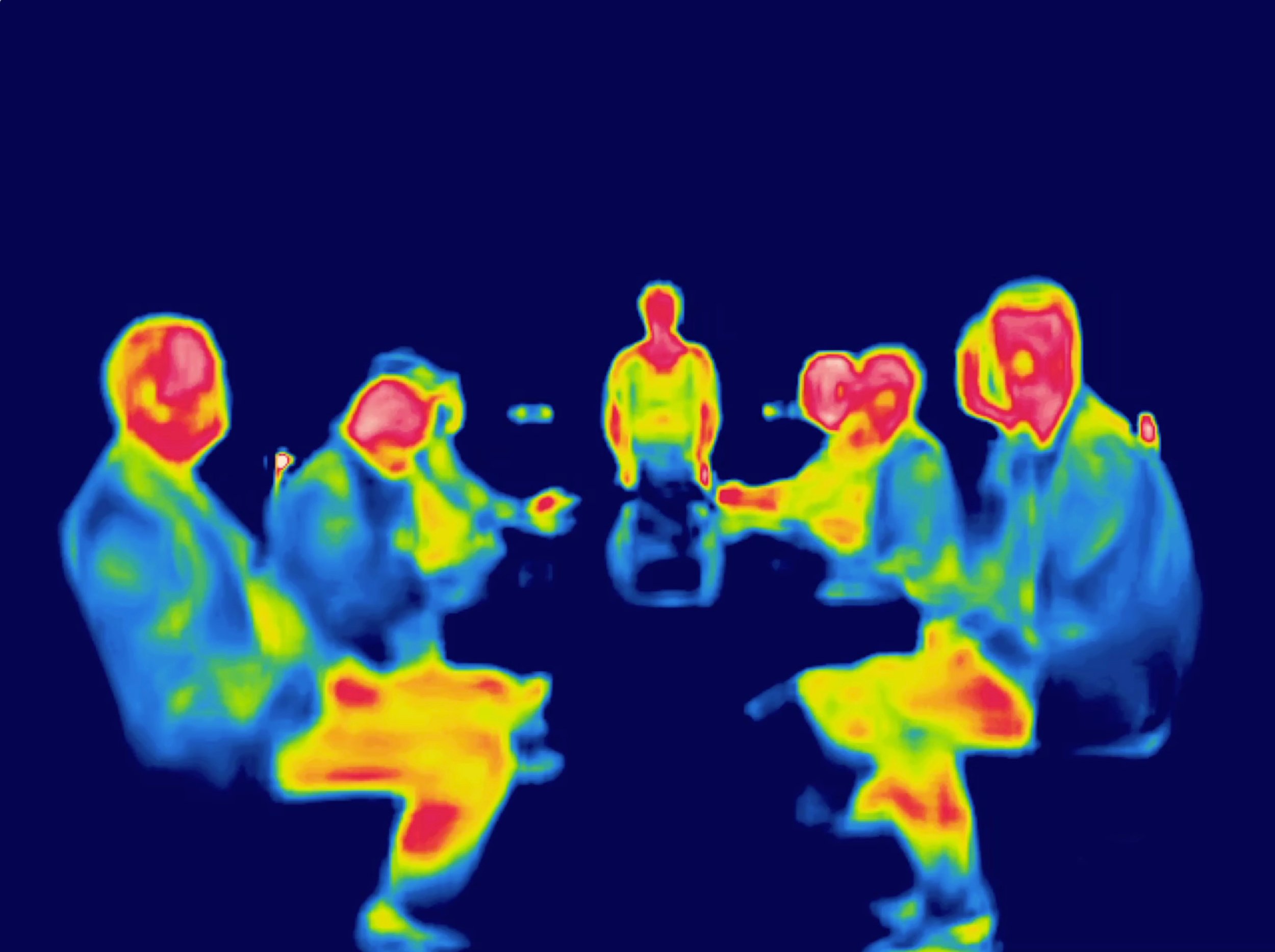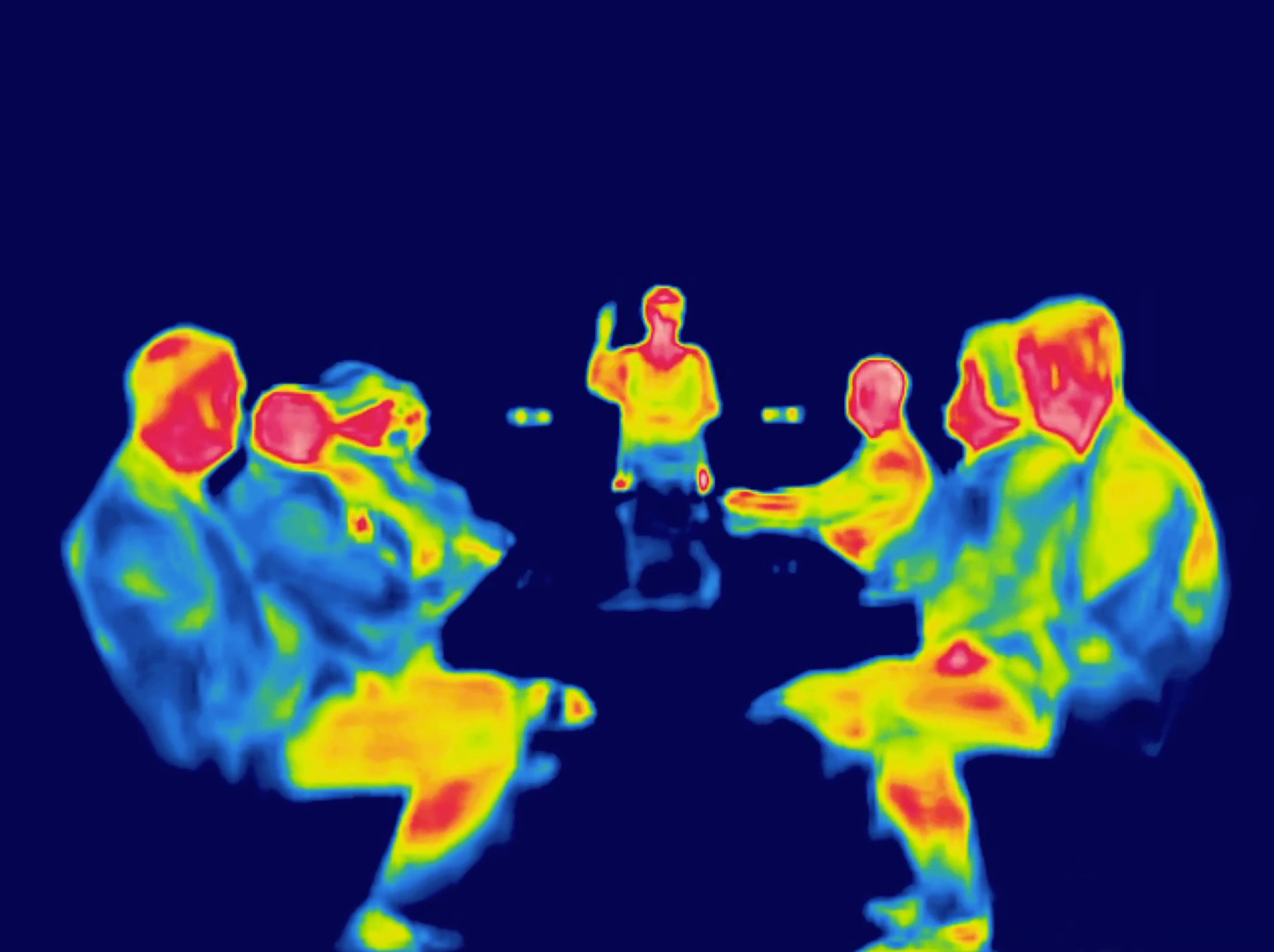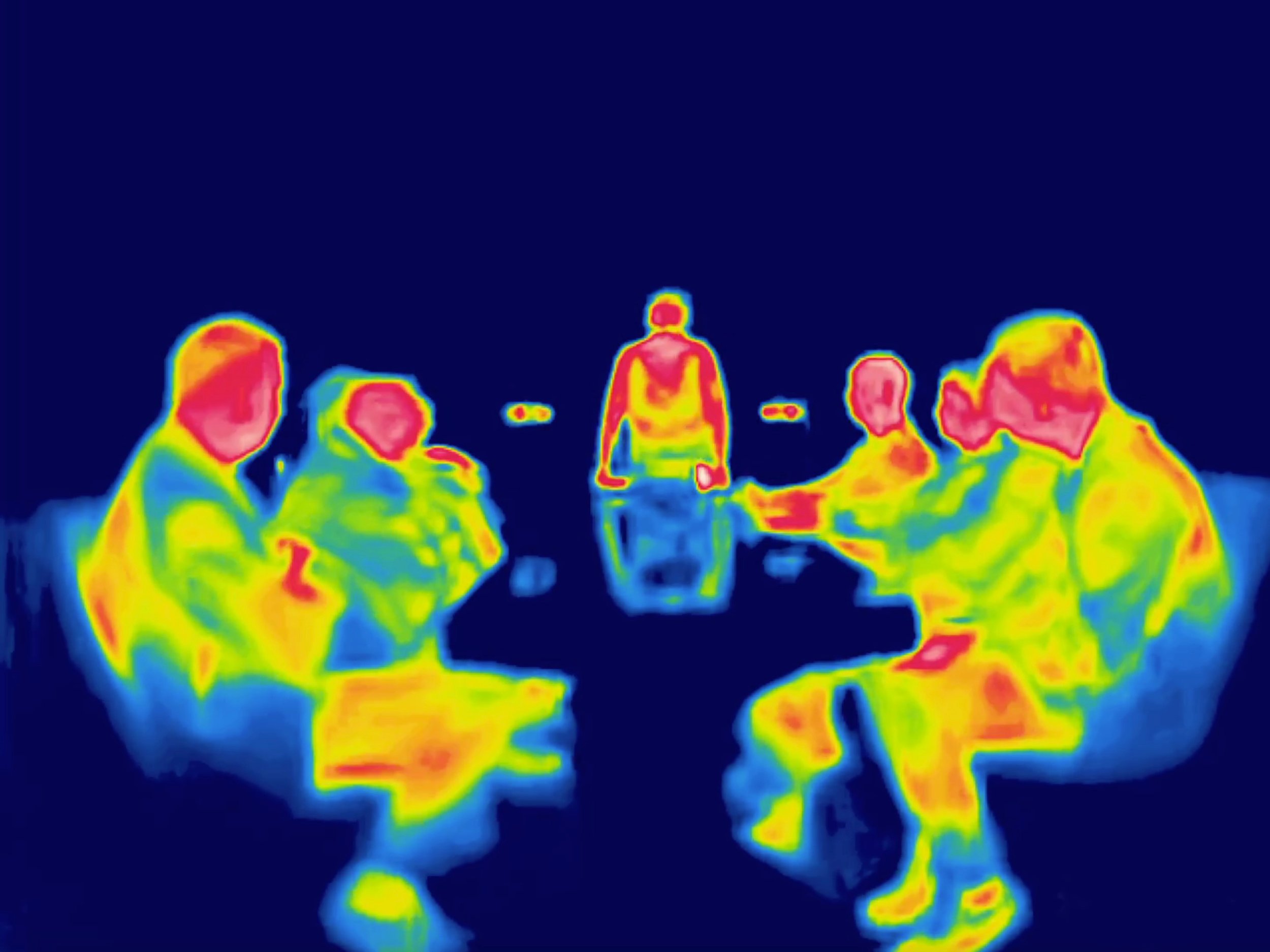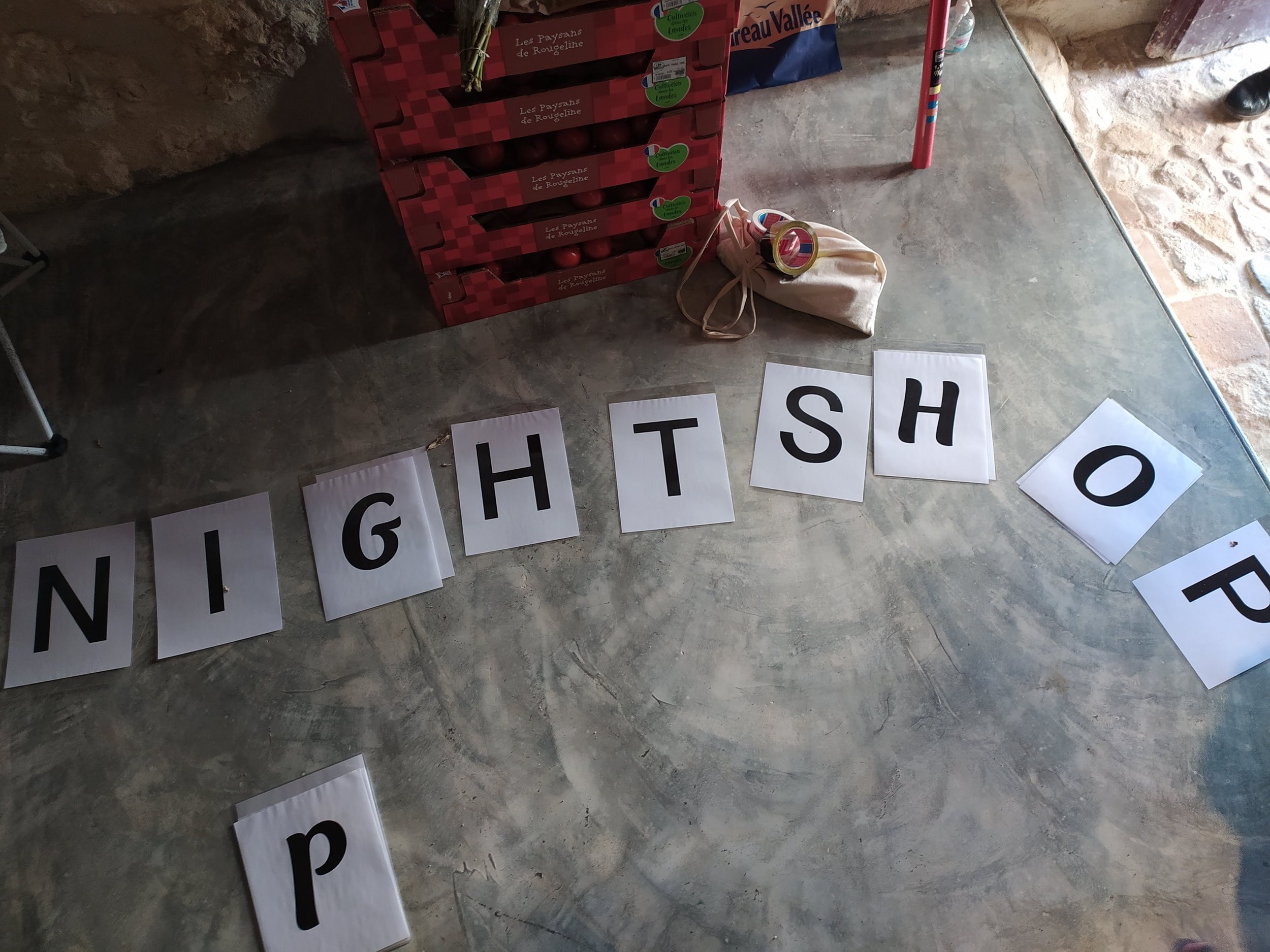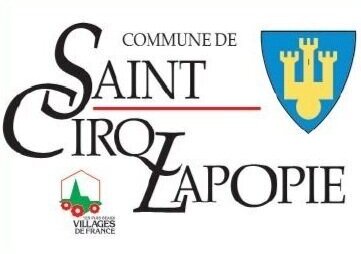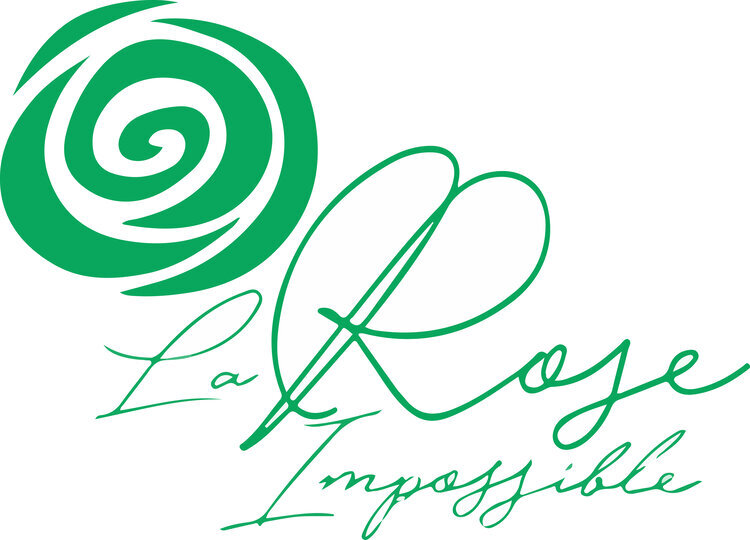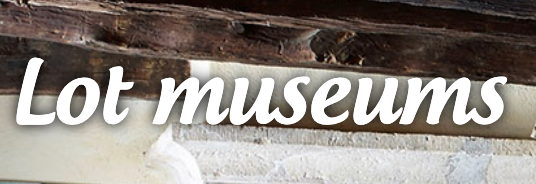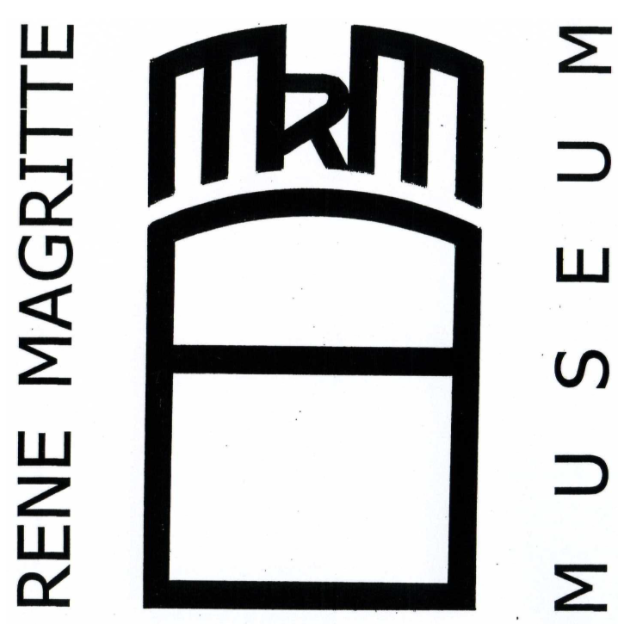Costume design by Pablo Picasso for the performance of Parade des Ballets Russes by Serge Diaghilev at the Théâtre du Châtelet in Paris on May 18, 1917. Characters in the parade: French Manager, Horse and American Manager.
This year program, PARADE, gathers a group of artists, architects, and performers, selected by RADICALE 1924’s Founder and Director, Chantal Yzermans. The group convenes for one week in September 2021 at Saint Cirq Lapopie.
PARADE inaugurates the Residency Program by remembering the 1917 ballet PARADE, choreographed by Leonide Massine, with music by Erick Satie, a script by Jean Cocteau and set designs by Pablo Picasso. It was in the notes of the program where Guillaume Apollinaire first used the term Surrealism. Apollinaire died of influenza during the 1918 pandemic.
In recognizing this past, the residency is not looking to give new meaning to Surrealism, nor is intending to trace a genealogy of practices connecting today’s artists to the artistic and literary revolution that shook the avant-garde of the twentieth century. Instead, by inviting artists to live and work in Saint-Cirq-Lapopie, the residency aims at formulating new horizons for a world that is changing. Visiting this past to run away with and from it, situating us in the need to think on collaborative practices and the artistic doing, on the merging of objects and bodies, and on the possible movements of and for togetherness. Following these interests, PARADE is not a performance but a stroll through a Medieval town in rural France, not a reenactment but an invention looking not to represent a past, but to search for a different future. Different how?
In the First Surrealist Manifesto Breton defined Surrealism as “pure psychic automatism, by which it is intended to express, verbally, in writing, or by other means, the real process of thought. Thought's dictation, in the absence of all control exercised by the reason and outside all aesthetic or moral preoccupations.” Today, the RADICALE potentiality of creativity as a way to channel a future beyond the standard and controlled normality - a pre-pandemic normal that will never come back - continues to be an urgent task.
PARADE poses the question of how to work with an object that escapes the norm, that aims to be for itself, an origin of something else, rather than being contrived to the usual and expected, either aesthetic or political. Thus, sharing intentions with surrealism, how to unveil the operative forces that conform reality and place the object as a carrier of a radical difference? What is the conjugation of objects that can invoke a future beyond this new normalcy?
Spanning over four years RADICALE 1924 is an Art Residency, a series of Public Events, a yearly Publication, and an ongoing Research into creativity as means for liberation. As its first edition PARADE will contribute to shape the scope of the Program and will initiate a reflection on how we work together, with and against Surrealism.
Conceptually organized around issues of self-presentation, body and object relations, alternative economics and daily routines, the artists have generated proposals that reconfigure collective imaginaries and predetermined assumptions.
The inaugural season counts with the participation of an international cohort of artists from different generations: Carlos Aires, Guillaume Bijl, Vinicius Couto, Luc Deleu, Cedric Fargues, Stéphanie Lagarde, Samyra Moumouh, Mikes Poppe, Ria Pacquée, Pieter van der Schaaf, Idris Sevenans, Siham Mehaimzi and A.L. Steiner.
The artworks are placed in different locations throughout the village, following the itinerary:

